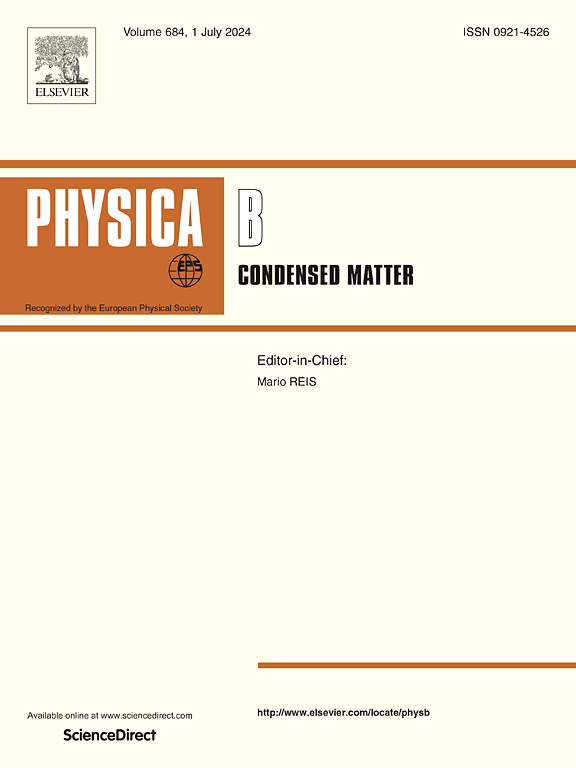Electronic and magnetic properties of freestanding 3d transition metal-doped χ3 borophene: A density functional theory study
IF 2.8
3区 物理与天体物理
Q2 PHYSICS, CONDENSED MATTER
引用次数: 0
Abstract
The emergence of borophene and its polymorphic phases has opened new possibilities in advanced technologies. Recent experimental studies have demonstrated the potential to synthesize freestanding and phases through methods such as mechanical and liquid phase exfoliation. In this work, we focus on the phase of borophene. Using first-principles calculations, we investigated the properties of borophene monolayers doped with 3d transition metals, namely Cr, Mn, Fe, Co, and Ni. The transition metal (TM) atoms were found to integrate well into the structure, with variations in electronic and magnetic properties depending on the type of impurity atom and its geometric position within the lattice. Cr and Mn doping produced the highest magnetization levels—2.83 and 3.13 , respectively. Notably, the material retained its metallic character even at high concentrations of Cr and Mn atoms. Furthermore, the observed long-range interactions between the impurity atoms in the doubly-doped structures suggest the potential for indirect magnetic spin coupling. These findings offer valuable insights into the properties of 3d TM-doped freestanding borophene, highlighting its potential for applications in spintronics, magnetic storage devices, and other advanced nanotechnologies.
求助全文
约1分钟内获得全文
求助全文
来源期刊

Physica B-condensed Matter
物理-物理:凝聚态物理
CiteScore
4.90
自引率
7.10%
发文量
703
审稿时长
44 days
期刊介绍:
Physica B: Condensed Matter comprises all condensed matter and material physics that involve theoretical, computational and experimental work.
Papers should contain further developments and a proper discussion on the physics of experimental or theoretical results in one of the following areas:
-Magnetism
-Materials physics
-Nanostructures and nanomaterials
-Optics and optical materials
-Quantum materials
-Semiconductors
-Strongly correlated systems
-Superconductivity
-Surfaces and interfaces
 求助内容:
求助内容: 应助结果提醒方式:
应助结果提醒方式:


